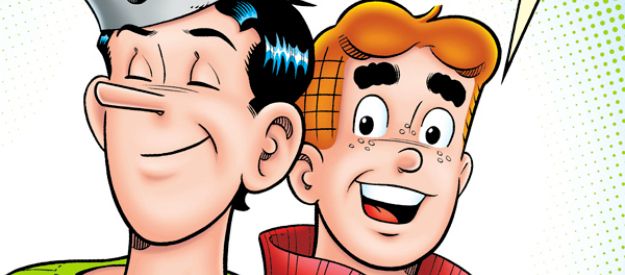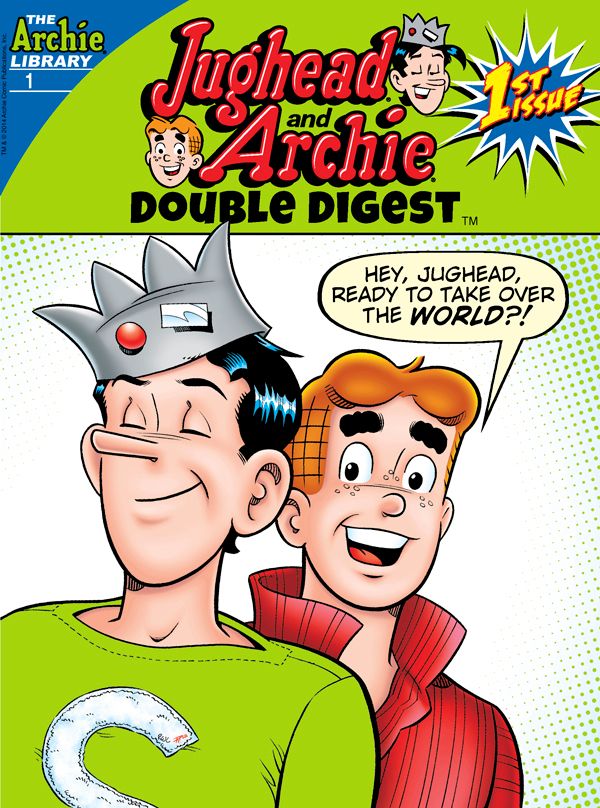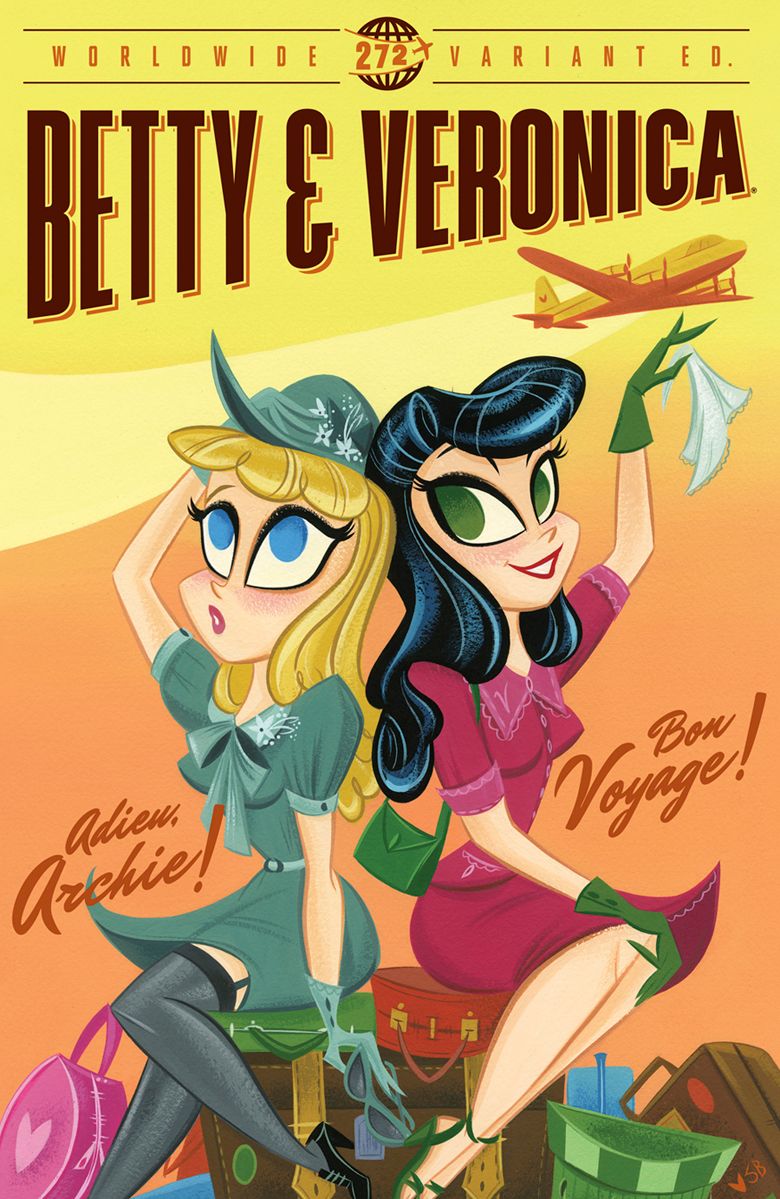Archie Comics is in an unusual position among North American comics companies, as not only is a majority of its titles geared toward younger readers, but a majority of that audience is female.
Curious to learn how Archie maintains that readership, I reached out to President Mike Pellerito to discuss how he envisions the market for the company's core kids line, and how he seeks to expand what it offers. Of course, the recent hiring of Roberto Aguirre-Sacasa as chief creative officer and his potential impact on the line became central to the discussion.
In the comments section, please be sure to answer Pellerito's question to Robot 6 readers.
Tim O'Shea: Over the past several years, Archie Comics has clearly retooled itself to appeal to the market more. How challenging has it been to update the characters in a way that appeals to today's kids?
Mike Pellerito: The freedom to appeal to a wider market comes from the top – our CEO Jon Goldwater. Once you have the person running the company empowering and supporting his team with his energy and no fear attitude, the ideas start to form. We’re constantly talking to each other and with our great staff about what else the company can do to give fans the best stories featuring these characters. It’s very cool to see how people react to all the new stuff the company is doing, but at the core, the characters remain the same. That’s what appeals to kids and will continue to appeal to them. As Jon says, Riverdale has changed to catch up with the times, but the Archies are – at their core – the same.
Would you say that Archie comics are representative of today's world?
Riverdale’s an idealized place that is modern and represents the real world. In terms of tech, fashion, language and so on, we try to keep the books as current as possible. Comics are never a completely perfect reflection of life, but they represent it. Readers can relate to the themes, struggles and laughs the Archie characters have because even in an idealized story, the core is something they can connect with.
How do you gauge if the kids line continues to resonate with kids -- and through that, what are you finding that kids react best to?
It’s kind of amazing, but Archie titles connect with kids. Give a kid an Archie book and they know it’s written and drawn for them, It’s like a bowl of candy – bright colors, fun characters and stories that are informative but entertaining. They get a sense of accomplishment by reading something on their own and the stories are very relatable. I think the connection point varies from kid to kid, whether it’s the art, the format, the story or just the magic the characters bring to each story.
Aside from that, the numbers on the newsstand continue to be strong, which is a more literal gauge. The books are selling to parents and kids, so we’re hitting the mark, which is a huge compliment.
No other comic book company has a presence in grocery store checkout lines like Archie. How much has that presence helped the kids line over the years?
It’s been integral. It’s the best way for us to connect with new and casual readers in print. Once they’ve converted, they can visit their local comic shop, bookstore or digitally through their devices, but the newsstand is what introduces them to their comic book fix. We’ve done a lot of formatting experiments with the digests and tried our best to offer readers a lot of value for their dollar, in terms of page count, fifth colors and more. The response has been overwhelmingly positive.
Demographically most comic companies have historically struggled to gain female readership. However, Archie has always seemed to have had a strong female readership, particularly with titles like Betty and Veronica. Demographically how does Archie kids line fandom break down these days, particularly in terms of gender?
It varies. I’d say now it’s about 55 percent female for the kids line. As people get older, the audience changes. Life with Archie, for example, is geared toward an older reader. Same with Afterlife with Archie, which is a much stronger title in the direct market. Both of those books’ readers are different, with some overlap.
Our longer-form collections geared toward new and older fans, like Best of Archie and our 1,000-pager series seem to be split 50/50 in terms of gender, with a huge variety as far as the age in readership.
I find conventions to be a good indicator of our audience, and we get everything from young kids to families of all types, teens, twentysomethings, tattooed bikers and everything in between. It’s great to see Archie mean so much to so many people, and to connect with them through these stories. Archie as a company has tried its best to be inclusive in our message and that’s really been reflected in our readership. Riverdale is a welcoming, inclusive place.
How important have relatively newer titles like Kevin Keller been to expanding the Archie audience?
Incredibly important. Kevin broke new ground when he was introduced – he was really the first character to break down those walls, and he was introduced in such a normal, welcoming way. We wanted to really show how inclusive and welcoming Riverdale is, and that story nailed it. Since then, he’s become a fan favorite and we’re so thankful the fans have embraced him and his many milestone moments – from his introduction to getting married in Life with Archie, he very much embodies Jon Goldwater’s vision for Riverdale and Archie as a company. The expansion into titles like Afterlife with Archie was built on the initial success with Kevin.
In bringing Roberto Aguirre-Sacasa into Archie management, do you envision him helping shape the kids line going forward?
Roberto is a key player in all aspects of the company. He’s a brilliant writer and so much more. Being a life-long comic fan gives Roberto a lot of insight into the industry and we rely on him a great deal to think of new ways to get these characters out there – either through existing channels or other media. He’s a very important part of what we do here. He has a great sense of story, and you can see it with every issue of Afterlife – and he knows the characters so well. Afterlife feels so organic because Roberto knows the characters so well. They seem natural in any setting. We’re very excited to have him as part of the team. Him coming onboard is one of the best moves we’ve made in a series of great moves.
And I have to say a bit about Afterlife – because that book has been wonderful for us. What Roberto and Francesco [Francavilla] – arguably the best artist in the industry, and I’m happy to argue it – are building with this book has been amazing. I think it’s really going to go down as one of the classic runs in comics, alongside evergreen books like Watchmen. And they both get these characters so well. It’s astonishing.
In terms of the kids line, is there any consideration of growing the line, or do you wish to focus on what is already succeeding, such as Sonic and Mega Man?
We’re always looking at ways to expand the business. We have our fingers crossed about a few things. As Jon says, “Archie is open for business.” If it makes sense and we can come to a good deal, we’re all for it. We’ve proven that we are extremely successful at managing licensed properties, from TMNT years ago to Sonic and Mega Man.
We’ve had the Sonic license for decades, and it’s a proven winner for us. We saw huge success when we crossed Sonic and Mega Man in the “Worlds Collide” storyline and that’s just the beginning. We have “Dawn of X” on the horizon for Mega Man, which introduces the Mega Man X world – think “Days of Future’s Past” for Mega Man – which will be big among core fans. We’ve also got some major Sonic news slated to hit before Comic-Con. So, things are humming along.
Is there a question you would like to pose to Robot 6 readers?
Which Archie supporting character would you like to see more of? Characters like Cosmo, Lil’ Jinx, Pat the Brat, That Wilkin Boy and Katy Keene – or anyone you haven’t seen in a while?




